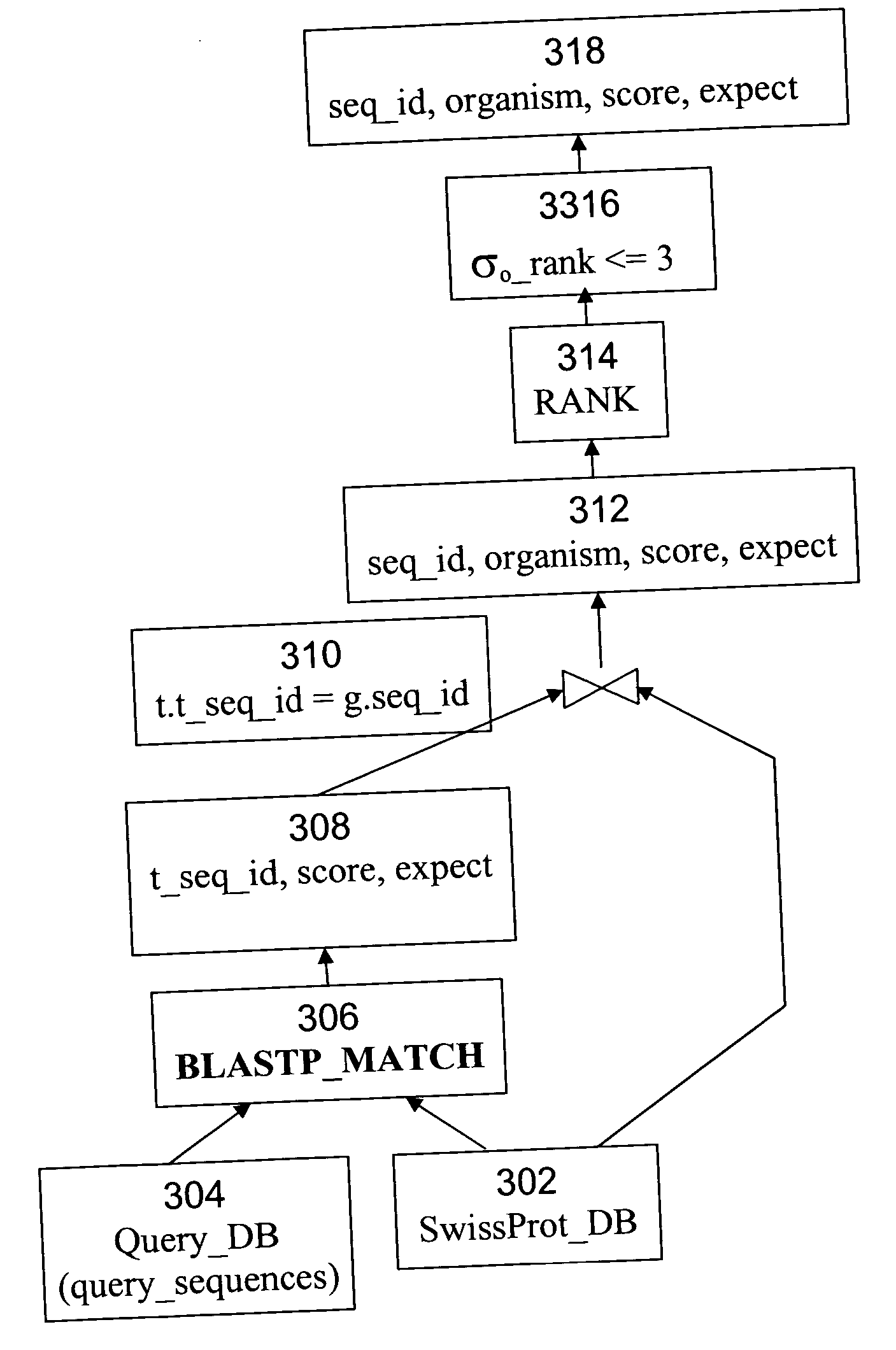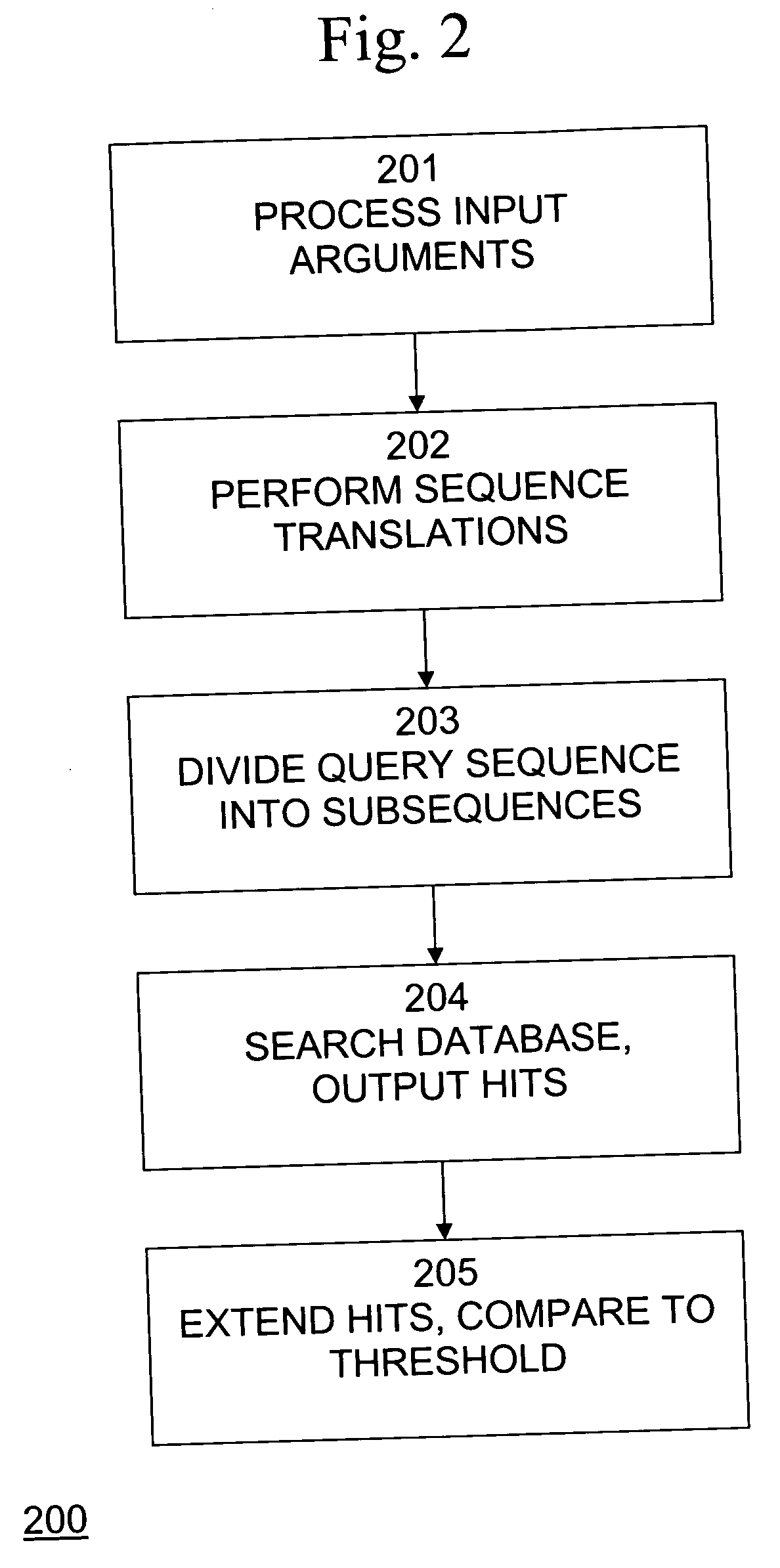Expressing sequence matching and alignment using SQL table functions
a table function and function technology, applied in the field of table functions, can solve the problems of performance problems, limit the scalability of such a solution, and the impracticality of dynamic programming algorithms for searching large databases without the use of a supercomputer or other special purpose hardwar
- Summary
- Abstract
- Description
- Claims
- Application Information
AI Technical Summary
Benefits of technology
Problems solved by technology
Method used
Image
Examples
Embodiment Construction
BLAST, developed by Altschul et al. in 1990, is a heuristic method to find the high scoring locally optimal alignments between a query sequence and a database [1]. BLAST focuses on no-gap alignments of a certain fixed length. The BLAST algorithm and family of programs rely on work on the statistics of un-gapped sequence alignments by Karlin and Altschul. The statistics allow the probability of obtaining an un-gapped alignment (also called MSP—Maximal Segment Pair) with a particular score to be estimated. The BLAST algorithm permits nearly all MSPs above a cutoff to be located efficiently in a database.
The algorithm operates in three steps: 1. For a given word length w (usually 3 for proteins and 11 for nucleotides) and a score matrix, a list of all words (w-mers) that can score greater than T (a score threshold), when compared to w-mers from the query is created. 2. The database is searched using the list of w-mers to find the corresponding w-mers in the database. These are calle...
PUM
 Login to View More
Login to View More Abstract
Description
Claims
Application Information
 Login to View More
Login to View More - R&D
- Intellectual Property
- Life Sciences
- Materials
- Tech Scout
- Unparalleled Data Quality
- Higher Quality Content
- 60% Fewer Hallucinations
Browse by: Latest US Patents, China's latest patents, Technical Efficacy Thesaurus, Application Domain, Technology Topic, Popular Technical Reports.
© 2025 PatSnap. All rights reserved.Legal|Privacy policy|Modern Slavery Act Transparency Statement|Sitemap|About US| Contact US: help@patsnap.com



